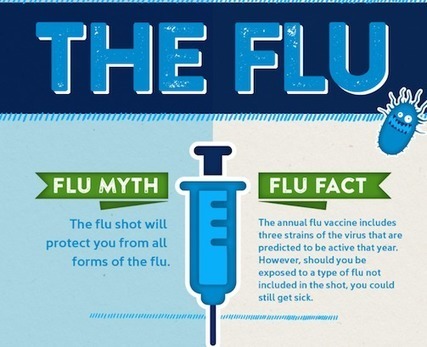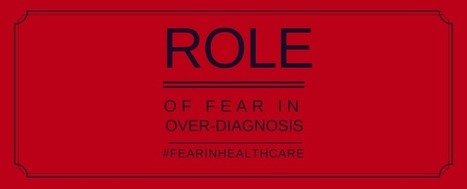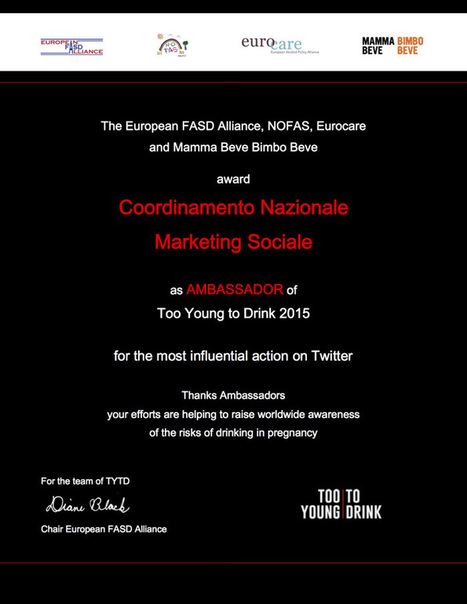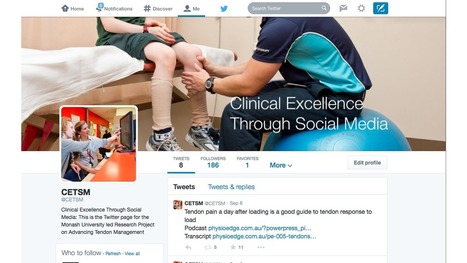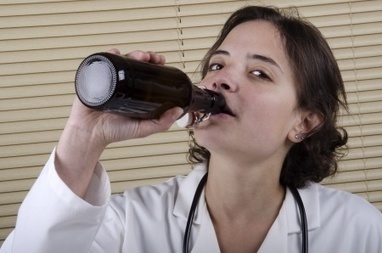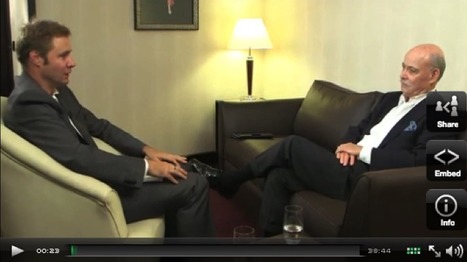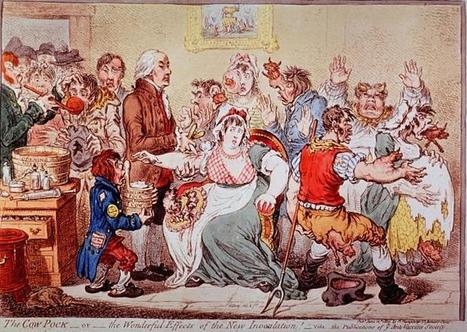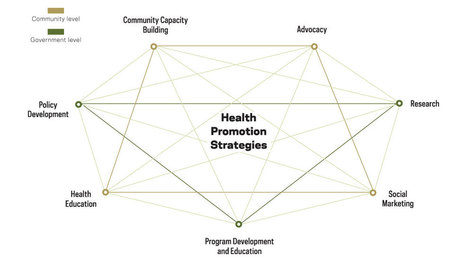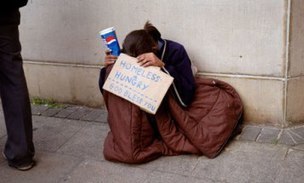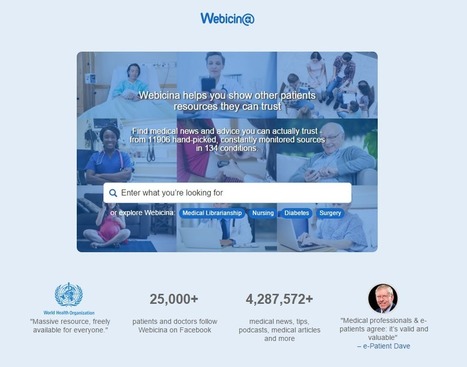 Your new post is loading...
 Your new post is loading...

|
Scooped by
Giuseppe Fattori
March 22, 2016 12:25 PM
|
Il testo è estratto dal documento di Tesi di laurea "DISTRIBUTORE AUTOMATICO TIPO FREE STANDING HOT MACHINE" del dott. Rodolfo Poleni laureato in Disegno Industriale presso la Scuola del design del Politecnico di Milano.Il dott. Rodolfo Poleni svolge attualmente attività di Tecnico e Designer Libero professionista offrendo consulenza presso aziende di produzionee e di didattica per Società di formazione e Istituti professionali. Dall’anno accademico 2008-2009 collabora in alcuni corsi della Scuola del design del Politecnico di Milano. Per approfondire rivolgersi a: polenirodolfo@libero.it

|
Rescooped by
Giuseppe Fattori
from Co-creation in health
March 22, 2016 12:24 PM
|
Il marketing nel settore Healthcare ha di sicuro ancora molte sfide da affrontare, sia per la sensibilità degli argomenti trattati che per le caratteristiche di prodotti e servizi. Diventa ancora più importante in questo settore sviluppare una strategia digital specifica e valutare in anticipo tutte le possibili criticità che potranno coinvolgere il brand. Oggi vi proponiamo alcune campagne pubblicitarie Healthcare che hanno riscosso successo.

|
Rescooped by
Giuseppe Fattori
from Co-creation in health
March 22, 2016 12:22 PM
|
“Pseudo-dangers represent further opportunities to avoid problems we do not wish to confront….” – Barry Glassner, The Culture of Fear Introduction For a while now, I’ve been concerned about the increasing role that fear has played as a tactic in persuading patients to choose certain treatments in healthcare, and to adopt certain habits. Fear is also, often a dominant driver for patients in their health decision-making process. Fear, however, is an unwanted distraction when making decisions. In contrast to a calm state of mind, it creates added anxiety and stress, in a citizenry already burdened with increasing stressors. How can adding to this be constructive, or further, even moral? How can healthcare decisions, made from fear, be in any way conducive to optimal health outcomes, or conducive to sustainable well-being throughout our lifespans?
I professionisti della salute sono consapevoli che l’adozione di strumenti mobili ottimizza i percorsi di cura e il loro controllo. La presenza di App sul mercato è sicuramente di stimolo, ma per passare dalle parole ai fatti è necessario che siano gli operatori sanitari stessi a prendere l’iniziativa.
Di App per la salute e App medicali (quelle App che funzionano come un dispositivo medico) si parla molto, ma sempre di qualcosa “che verrà”. Per una volta, proverei a rovesciare il punto di vista. Perché dovrebbe per forza “arrivare”, visto che si intravede un effetto saturazione nel mondo smartphone, e i giganti del settore dichiarano che le vendite non crescono più? Non è una moda che passerà? Qualche considerazione sul tema.

|
Scooped by
Giuseppe Fattori
February 25, 2016 5:17 PM
|
Comunicazione digitale in Sanità e Corporate reputation Il primo incontro del Focus point della Rete di Sanità digitale, tenutosi a Taranto lo scorso 26 gennaio, ha avuto lo scopo di segnare il perimetro dei temi della comunicazione digitale in Sanità.

|
Scooped by
Giuseppe Fattori
February 25, 2016 5:16 PM
|
Anche quest’anno la Società Italiana di Nutrizione Umana – SINU, in collaborazione con il Gruppo Intersocietario per la Riduzione del Consumo di Sodio in Italia – GIRCSI, aderisce alla Settimana Mondiale 2016 (29 febbraio - 6 marzo 2016) per la Riduzione del Consumo di Sale proposta dalla World Action on Salt and Health – WASH. La campagna è dedicata al sale nascosto, consumato in rilevanti quantità sin dall’infanzia. SINU intende sensibilizzare l’opinione pubblica verso una scelta consapevole di alimenti meno ricchi in sale, anche attraverso la lettura dell’etichetta nutrizionale.

|
Scooped by
Giuseppe Fattori
February 25, 2016 5:14 PM
|
Gli “AMBASSADOR” per la campagna Too Young To Drink 2015 (#TYTD2015) sono: AUF NOFAS (Germania), “Coordinamento Nazionale Marketing Sociale (MKTS)” (Italia),“SAF Ocean Indien” (Francia), “SoCal NOFAS” (Stati Uniti) e “Sosnowiec City Department of Health” (Polonia).

|
Scooped by
Giuseppe Fattori
February 25, 2016 5:12 PM
|
Leonardo, 732 grammi alla nascita, deve la vita ai medici e agli operatori del Reparto neonatologia e terapia intensiva dell’Ospedale Civile di Brescia; Davide, sovrintendente di polizia della questura di Belluno, ha salvato la vita a una ragazza che si era gettata nelle acque del lago del Mis; a Castelvetrano, in provincia di Trapani, nei terreni confiscati alla mafia è nata una orto-fattoria gestita da disabili; il Comune di Castel San Pietro, 20mila abitanti in provincia di Bologna, ha raccolto dalla collaborazione con l’Agenzia delle Entrate oltre un milione di euro in tre anni, destinandoli al finanziamento di spese straordinarie, ta cui una nuova sala studio nella bibiloteca comunale e il completamento della tribuna nel campo sportivo di Osteria Grande. Cosa hanno in comune queste quattro storie?
Background: Approximately 80% of research evidence relevant to clinical practice never reaches the clinicians delivering patient care. A key barrier for the translation of evidence into practice is the limited time and skills clinicians have to find and appraise emerging evidence. Social media may provide a bridge between health researchers and health service providers. Objective: The aim of this study was to determine the efficacy of social media as an educational medium to effectively translate emerging research evidence into clinical practice.

|
Scooped by
Giuseppe Fattori
December 21, 2015 5:42 PM
|
The process of distilling and disseminating the best available evidence from research, context and experience, and using that evidence to inform and improve public health practice and policy. Put simply, it means finding, using and sharing what works in public health. STEPS in Evidence-Informed Public Health Click on the diagram below for more information and helpful links to help you understand how to complete each step of the process. Find links to recommended methods and tools from our Registry that are applicable to each step.
|
A doctor grabs a drink with friends after work and afterwards posts a picture of himself and his friends, smiling with a beer in their hands. No big deal, right? Except the doctor still had his scrubs on, and it might lead folks to think he was drinking on the job, or at least right before work. College athletic coaches are putting out the word in recent months – do something stupid online, and we will pull your scholarship faster than you can say “snapchat.” College coaches aren’t the only ones checking out online profiles – so are medical schools, employers and potential patients.
Via Plus91, Giuseppe Fattori

|
Rescooped by
Giuseppe Fattori
from Co-creation in health
March 22, 2016 12:23 PM
|
Economist and author Jeremy Rifkin provides insight on climate change, the increasing demand for energy, and the huge energy dilemma that our society faces today as we enter the third industrial revolution.
Via jean lievens, Giuseppe Fattori
Controversy over adverse effects of vaccines has reignited across the media recently. New studies also investigate the influence this information has on the decision to vaccinate ..................................... Pro-vaccine communications 'are ineffective' A study in the journal Pediatrics assessed the effectiveness of vaccination messages. Political scientist Brendan Nyhan, PhD, tested four kinds of message on 1,759 Americans: "Autism correction" was a factual, scientific rebuttal of the claims that the MMR vaccine causes autism; "Disease risks" listed the risks of contracting measles, mumps or rubella; "Disease narrative" was a true story about a baby who contracted a very serious case of measles.
Because of the rising cost of treating illness coupled with the difficult economic environment, interest in health promotion is increasing worldwide. The World Health Organization (WHO) defines health promotion as the process of enabling people to increase control over their health and its determinants (e.g. smoking, physical activity, diet), and thereby improve their health. This is usually addressed by activities aimed at promoting healthy behaviors and creating healthy policies and environments in order to affect large segments of the population. The impact of these activities is enhanced if healthy public policy is adopted across all sectors of society, especially by governments, including in settings such as urban planning not typically seen as part of the health system.
In an earlier blog, I wrote about what health promotion is all about and what makes it distinct. In a nutshell, health promotion is about key values (empowerment, control, choice) and approaches that enable individuals and communities to take greater control over the factors that influence their health. Equating health promotion with trying to make populations healthier is broadly true, but how this is done is the key question. Part of my frustration with the profession of health promotion is the obsession on individuals’ lifestyle – how they eat and exercise for instance – as though this is the answer to tackling complex problems like obesity, diabetes and hazardous alcohol consumption.
A lot of words have been added to the dictionary over the past few decades thanks to social media, but few have become so widely used and accepted as "hashtag." For a long time, the hashtag symbol (#) was known simply as the "pound" symbol. Now, I could swear that the only time I hear it referred to as a pound symbol is when I enter my PIN number to pay my cell phone bill. While hashtags were originally made famous by Twitter, they're now used on many major social networks, including Facebook and Instagram. Let's explore what a hashtag is, why they're so great, and how they work on Twitter, Facebook, and Instagram.
Via Kamal Bennani, Giuseppe Fattori
In 2008, I was a fifth year medical student and had a simple idea. I thought curated social media resources should be available to patients and physicians for free. My sister helped me launch a company and development of Webicina started right away. For six years, I treated it like a startup but eventually realized,…
Aims Assess whether alcohol companies restrict youth/adolescent access, interaction, and exposure to their marketing on Twitter and Instagram. Methods Employed five fictitious male and female Twitter (n = 10) and Instagram (n = 10) user profiles aged 13, 15, 17, 19 and/or 21. Using cellular smartphones, we determined whether profiles could (a) interact with advertising content—e.g. retweet, view video or picture content, comment, share URL; and/or (b) follow and directly receive advertising material updates from the official Instagram and Twitter pages of 22 alcohol brands for 30 days. Conclusion The alcohol industry is in violation of their proposed self-regulation guidelines for digital marketing communications on Instagram. While Twitter's age-gate effectively blocked direct to phone updates, unhindered access to post was possible. Everyday our fictitious profiles, even those as young as 13, were bombarded with alcohol industry messages and promotional material directly to their smartphones.

|
Scooped by
Giuseppe Fattori
February 25, 2016 5:10 PM
|

|
Scooped by
Giuseppe Fattori
December 21, 2015 5:09 PM
|
Il Laboratorio FIASO “Comunicazione e promozione della salute” ha analizzato i modelli organizzativi e le strategie poste in essere dalle Aziende sanitarie italiane nel campo dell’educazione, comunicazione e promozione della salute. Nella direzione tracciata dal progetto CompHP (Developing Competencies and Professional Standards for Health Promotion Capacity Building in Europe) sulle competenze degli operatori, il Laboratorio ha inoltre confrontato gli standard e i processi di accreditamento internazionali con le “pratiche” delle Aziende sanitarie.

|
Scooped by
Giuseppe Fattori
December 21, 2015 5:10 PM
|
Saint-Vincent - 22, 23 e 24 ottobre 2015 COM.Lab 2015 Associazione comunicazione Pubblica - Commissione Salute "Sicurezza, Salute e Sanità".

|
Scooped by
Giuseppe Fattori
December 21, 2015 5:08 PM
|
|

 Your new post is loading...
Your new post is loading...
 Your new post is loading...
Your new post is loading...





